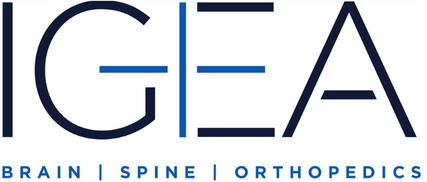CERVICAL HERNIATED & BULGING DISC TREATMENT IN NEW JERSEY
A cervical disc is a tough, elastic-like pad located between the bones of the spinal cord that act as shock absorbers for the vertebrae. It also allows for flexibility (twisting and bending) of the spine (spinal-health). A tough, fibrous outer wall surrounds the disc’s soft inner core (nucleus). A herniation occurs when the cervical disc’s nucleus breaks or seeps through the outer core and forms a bulge. The bulge can press into the spinal canal, thereby placing pressure on the spinal cord and nerve roots resulting in pain which shoots along the nerve path into the arm.
CAUSES OF THE CONDITION
The outer wall of a disc can develop small cracks, tears or weak spots that allow the inner core to extrude. Herniations of the cervical spine typically result from normal wear and tear associated with aging. Our spine specialists in New Jersey notice cervical disc herniations are common in adults 30-50 years of age and are even more common amongst smokers. In other instances, severe trauma to the cervical spine can cause a disc to herniate.
SYMPTOMS TO LOOK OUT FOR
Symptoms our New Jersey cervical herniated disc specialists have noticed commonly occur spontaneously except in the case of acute trauma. Tingling or numbing sensations in the neck, shoulder, arm and hand are often felt when a bulging disc has pinched a nerve root. Symptoms depend on the level in the cervical spine where a nerve is pressured. These dependent pain patterns differ in arm areas ranging from the upper section and deltoid to triceps, biceps, wrist extensor and hands. Painful burning sensations in these areas are even more common and oftentimes, patients experience muscle weakness.
TESTS AND TREATMENT OPTIONS
Tests
After a doctor has researched a patient’s medical history and has been informed of the symptoms, an MRI (magnetic resonance imaging) is typically ordered. This test is the best way to detect (via imagery) a pinched nerve root.
CT scans with myelogram may also be suggested to further explore the injury to provide doctors with a clearer picture. This scan is usually not ordered immediately as it uses a minimally invasive injection of dye into the spine. CT scans without the use of myelogram are not useful (spine-health).
Conservative Treatment
The first step in conservative cervical herniated disc treatment our New Jersey specialists recommend is rest and immobilization with use of a soft collar. Anti-inflammatory medication may be prescribed along with pain management medication. Physical therapy, which may or may not include exercise and chiropractic manipulation, commonly accompanies the previously mentioned conservative methods. Heat, ice, ultrasound, massage or a combination of these methods may be performed to help reduce muscle spasms and relieve pain.
Stronger oral pain medications can be recommended for patients experiencing severe pain. Persistent pain can be treated with corticosteroids injected directly into the area for rapid pain relief. For people living with a bulging disc in New Jersey, there are alternative treatment options our spine experts specialize in.
Surgery
When severe pain persists longer than 6-12 weeks and conservative methods have been exhausted, the next step is surgery. There are several approaches in which surgery for residents in New Jersey experiencing herniated cervical or bulging disc can be performed.
Anterior Cervical Discectomy and Spinal Fusion
Discectomy is the surgical removal of a damaged disc. An anterior approach is the most preferred method of surgery. A small, one-inch incision is made in the front of the neck where orthopedic surgeons remove the damaged disc and replace it with a bone graft. The graft and vertebrae are then fused together with the use of plates and screws to ensure the bones heal correctly.
Anterior Discectomy without Spinal Fusion
This method is performed similarly only without the use of a bone graft and stabilizing hardware. Typically, this procedure is not recommended because although the bones may still fuse together, the process is usually longer and the bones may heal incorrectly.
Posterior Cervical Discectomy
This procedure is technically more difficult to perform as the disc must be approached from behind the neck. Surgeons must navigate past veins, which tend to bleed and make visualization problematic. There is also more spinal manipulation associated with posterior cervical discectomy. This is, however, a reasonable approach for disc herniations which occur laterally in the spinal canal.
More post-operative pain is reported with the anterior method but the approach allows access to the spine through tissue planes which can be manipulated instead of cut. The procedure is most often outpatient (released the same day) or results in an overnight stay. Pain in the arm tends to dissipate quickly after surgery but arm numbness and weakness may linger for several months. Our cervical herniated disc experts in New Jersey ensure your recovery goes smoothly.
A PAIN-FREE FUTURE IS AVAILABLE
Don’t let discomfort in the arm become a pain in the neck. Contact the New Jersey cervical herniated disc specialists at IGEA Brain, Spine & Orthopedics at (908)-688-2377 for diagnosis or counseling regarding treatment options, spinal surgery and dealing with pain issues.

